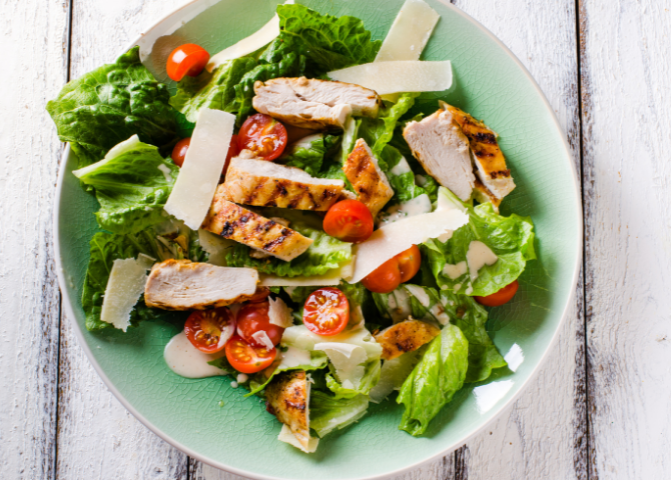20/10/2021
A Guide About Medical Weight Loss – Is It Cheating?
Table of Contents
- What is a Healthy Weight?
- An Important Note On BMI
- Why is It Important to Maintain a Healthy BMI?
- Cardiovascular Protection
- Diabetes Prevention
- Lower Risk of Cancer
- Lower Risk of Arthritis
- Having More Energy
- Maintaining Your Mental Health
- Prevention of Osteoporosis
- How to Lose Weight
- Nutrition for Weight Loss
- Exercise for Weight Loss
What is a healthy weight? Understanding BMI and why it matters and how to lose weight effectively.
The rising obesity epidemic presents a serious health challenge for millions of Australians. Starting a weight loss program to reach a healthier body weight could be one of the most important steps in extending your life. Medically supervised weight loss is now available with the support of an Australian healthcare professional.
Let’s dive in.
What is a healthy weight?
A healthy weight range is a BMI score of 18.5 to 24.9 1. But what does that even mean?
The body mass index (BMI) scale is a simple way of determining if you fall inside a healthy weight range based on population data. The BMI scale takes height and weight into account to determine if the person should lose, gain, or maintain weight.
To calculate your BMI, divide your weight (in kilograms) by height (in meters). You then have to divide that value by your height one more time, which will provide you with your BMI number.
For example, the calculation would look like this for a person who weighs 90 kilograms and is 190 cm tall (1.9 meters):
90 / 1.9 = 47.36
47,368 / 1.9 = 24.93 BMI
Alternatively, you can use an online calculator, which does that for you.
An important note on BMI
The BMI scale is a helpful way to have a target to focus on. For example, if the scale puts you at a BMI of over 25, you should consider weight loss to get into a healthy weight range.
But the BMI scale falls short for certain populations of people because it only takes into account weight and height. The scale doesn’t look at body fat percentage, level of muscular development, bone mineral density, or other factors.
For example, a man with above-average muscular development might score a BMI of over 25, which would technically mean the person is overweight. But he might be at a healthy body fat percentage and at no immediate risk of cardiovascular disease, diabetes, or other health problems.
So, it’s crucial to account for other things aside from the BMI score. A clinician will take these factors into account as part of your assessment.
Why is it important to maintain a healthy weight?
Maintaining a healthy BMI is important for several reasons.
Cardiovascular protection
One of the most important reasons for having a healthy BMI is to reduce your risk of heart disease 2.
Excess body fat increases fat accumulation in the arteries, leading to the narrowing of arteries (coronary artery disease)3. This can lead to a heart attack.
Diabetes prevention
Diabetes is a chronic condition characterized by elevated blood glucose levels and damage to the blood vessels 4. It occurs due to insulin resistance or reduced insulin production by the pancreas. Diabetes can lead to severe cardiovascular disease, kidney damage, blindness, and amputation of limbs 5.
Lower risk of cancer
Cancer comes in many forms and the risk of cancer increases with obesity. The good news is that we can make lifestyle changes that put us at a lower risk of getting cancer in our lifetime. According to research, obesity is linked to a higher risk of several cancers, including of the 8:
- Esophagus
- Colon and rectum
- Kidneys
- Liver
- Pancreas
- Thyroid
Lower risk of arthritis
Arthritis is a condition characterized by inflammation and pain in our joints. The condition is common, with statistics showing that roughly 2.2 million Australians suffer from it today 9.
A high BMI puts us at an increased risk of developing arthritis because of the greater load on our joints. Additionally, a higher body fat percentage can lead to a quicker breakdown of cartilage 10.
Having more energy
Physical fitness is important for us to get the most out of life. Having a lower body weight percentage and higher lean muscle mass allows us to take part in everyday activities more fully.
You can enjoy time with your friends and family having a fit body and good cardiovascular health.
Maintaining your mental health
According to research, obese patients are more likely to suffer from a mental health condition11.
This is a vicious circle when issues regarding body image and self esteem can worsen a mental health condition.
How to lose weight with a calorie deficit
We need to eat less calories than we use each day.
A calorie is a unit of measurement used to quantify the amount of energy that food and beverages provide to the body. More specifically, it’s the amount of energy required to raise the temperature of 1 gram of water by 1 degree Celsius. The body uses calories from food to fuel various functions, such as breathing, digestion, physical activity, and maintaining body temperature.
Our total daily energy expenditure (TDEE) represents the number of calories we burn each day. Our TDEE consists of four primary things 13:
- Basal metabolic rate (BMR) – the number of calories your body burns at rest, even if you don’t move a muscle all day long
- Non-exercise activity thermogenesis (NEAT) – the calories you burn from all everyday activities like walking, brushing your teeth, playing with your kids, and more
- Exercise activity thermogenesis (EAT) – the energy you expend during dedicated exercise time
- Thermic effect of food (TEF) – the calories your body burns to break down the foods you eat and absorb their nutrients
Together, these four things make up our total daily energy expenditure. Weight loss occurs when we consume fewer calories than we burn, also known as creating a calorie deficit 14. Establishing a calorie deficit comes from taking care of two things: your nutrition and activity level. Let’s take a look.

High protein meals with plenty of fibre
Nutrition for weight loss
The goal here is a calorie deficit, which means eating less than your basal metabolic rate. And we need eat the right amount of calories, so weight loss occurs gradually and maintains lean muscle mass. Eating too little can make you feel starved and increase your risk of muscle loss. So, it’s ideal to lose between 0.5 and one percent of your weight per week 15. For example, if you weigh 90 kilograms, lose between 0.45 to 0.9 kilos weekly.
Aside from that, your nutrition should be high in protein because it plays a vital role in satiety and supports lean tissue 16. Foods like beef, chicken, fish, dairy, and eggs will help you get to your target protein levels.
You should also eat plenty of fibrous veggies for good nutrition and satiety. For instance, a large bowl of mixed greens will barely have 100 to 150 calories, but it will fill you up nicely and provide much-needed fiber, vitamins, and minerals for good health.
Lastly, you should be mindful of liquid calories because they also add up quickly. Beverages like alcohol and soft drinks often have hundreds of calories and can quickly erase your calorie deficit, preventing you from losing any fat.

Get weekly resistance exercise targeting large muscle groups – glutes, lats and chest
Exercise for weight loss
As Dr Peter Attia says, exercise is going to have a “greater impact on both the length and quality of your life than any of the other domains that I can think of”
Exercises for weight loss include two key types:
- Aerobic Exercise (Cardio)
- Resistance Training
Aerobic exercise is vital for overall health, improving endurance, and burning calories to create a calorie deficit for weight loss. We recommend Zone 2 training, where your heart rate is 60-70% of its maximum. In this zone, fat becomes your primary energy source, especially during low-intensity activities. Three 30-minute sessions per week can significantly aid weight loss and promote longevity. You can hit this zone with activities like walking uphill, cycling, or swimming.
Resistance training is essential for weight loss and involves strength training—lifting weights. Building and maintaining muscle mass should be a top priority to help reach your weight loss goals and enhance your quality of life as you age. More muscle mass gives your metabolism a boost, meaning you burn more calories throughout the day, even at rest.
If you’re in a calorie deficit, resistance training helps preserve your muscle mass, ensuring most of your weight loss comes from fat. Just three 45-60 minute sessions per week, targeting all major muscle groups, can provide great benefits. Allow adequate recovery and focus on gradual performance improvements to see consistent progress.
Make exercise a habit, like brushing your teeth. There is nothing more important to maintaining your health, mental function and weight than regular daily exercise.
Medical Treatments For Weight Loss
Starting a weight loss journey can be challenging, and it’s okay if you’ve tried and struggled before. In fact, research shows that the more often you try, the higher your chances of success. Seeking help is crucial, and recent advancements have introduced new and innovative solutions.
What’s All the Buzz About GLP-1?
GLP-1 receptor agonists have gained a lot of attention recently, particularly for their role in managing diabetes and, more recently, obesity. These medications are changing the way we approach weight loss. But what is GLP-1, and why is everyone talking about it?
What is GLP-1?
GLP-1, or glucagon-like peptide-1, is a hormone produced in the gut that helps regulate blood sugar by promoting insulin secretion after meals and reducing glucose production by the liver. It also slows stomach emptying, helping to control appetite and increase the feeling of fullness. Researchers have developed GLP-1 receptor agonists, which mimic these effects, to treat metabolic conditions like type 2 diabetes and obesity.
GLP-1 and Weight Loss
The proven weight loss results of GLP-1 receptor agonists has changed the way obesity is managed, with these medications now approved in Australia for obesity.
How They Work for Weight Loss:
- Appetite control: GLP-1 agonists slow gastric emptying and affect brain regions responsible for hunger, helping people feel full sooner and stay full longer, reducing calorie intake without intense hunger.
- Sustained weight loss: Clinical trials show that, combined with lifestyle changes, GLP-1 agonists can lead to substantial weight loss—often over 20% of body weight—making them a breakthrough in obesity treatment.
Wider Potential of GLP-1
Beyond diabetes and obesity, researchers are exploring the potential of GLP-1 receptor agonists for other conditions, such as non-alcoholic fatty liver disease (NAFLD) and even neurodegenerative diseases like Alzheimer’s. The anti-inflammatory and neuroprotective properties of GLP-1 could have far-reaching health benefits.
Is It Cheating to Use GLP-1 Medications?
Absolutely not. Obesity is a medical condition, and it’s not your fault. GLP-1 medications are transforming the treatment of diabetes, obesity, and potentially other health issues. Their ability to regulate blood sugar, support weight loss, and protect heart health makes them an important tool in modern medicine. If your clinician recommends GLP-1 as a treatment option, it’s a valid and well-considered choice based on the benefits and risks—not a shortcut.
Taking the First Step: Join Our Clinician-Led Weight Loss Program
Embarking on a journey towards effective weight loss begins with a conversation with a healthcare professional. This professional could be your general practitioner (GP) or a specialised weight loss clinic such as Medmate. During this crucial consultation, your healthcare provider will conduct a thorough evaluation of your medical history, current health status, previous weight loss attempts, and your weight loss goals.
Assessment for Weight Loss
At Medmate, our medical experts take a comprehensive approach to weight loss. This approach considers various factors, including your Body Mass Index (BMI), any underlying health conditions, and the effectiveness of previous weight loss endeavors. Typically, eligibility for our medically assisted weight loss program is determined when your BMI exceeds 30. The process kicks off with an initial comprehensive consultation and the issuance of a request for initial blood tests.
The Weight Loss Program
After the initial assessment, you will be enrolled in a comprehensive weight loss program led by a Medmate clinician. This program covers a range of essential components:
- Defining your target weight and BMI.
- Evaluation of your current caloric intake.
- Determining a target caloric intake aligned with your weight loss goals.
- Setting weekly exercise goals.
- If deemed clinically appropriate, advising weight loss treatments.
- Providing instructions for at-home care.
- Outlining a program for regular review with the Medmate nursing and medical team.
Lifestyle Considerations
While medications can be significant aids in weight loss, it is crucial to understand that they are not standalone solutions. Achieving and maintaining a healthy weight involves incorporating healthy lifestyle choices alongside medication. At Medmate, we are deeply committed to helping you achieve permanent weight loss to improve your immediate health and quality of life and to maximise your healthspan.
Your Medmate doctor will help you consider the following lifestyle factors to complement your medication
Booking a Free Weight Loss Consultation
Medmate’s Clinican Led Weight Loss service starts with a free chat. One of our friendly nurses will give you a call to explain how everything works. Book a free consultation with our nurses at a time that suits you.
References
- Body mass index (BMI) – Australian Department of Health
- Katzmarzyk PT, Reeder BA, Elliott S, Joffres MR, Pahwa P, Raine KD, Kirkland SA, Paradis G. Body mass index and risk of cardiovascular disease, cancer and all-cause mortality. Can J Public Health. 2012 Mar-Apr;103(2):147-51. doi: 10.1007/BF03404221. PMID: 22530540; PMCID: PMC6974265.
- De Schutter A, Lavie CJ, Gonzalez J, Milani RV. Body composition in coronary heart disease: how does body mass index correlate with body fatness?. Ochsner J. 2011;11(3):220-225.
- Diabetes – Australian Institute of Health And Welfare (23 Jul 2020)
- Wu Y, Ding Y, Tanaka Y, Zhang W. Risk factors contributing to type 2 diabetes and recent advances in the treatment and prevention. Int J Med Sci. 2014;11(11):1185-1200. Published 2014 Sep 6. doi:10.7150/ijms.10001
- Gray N, Picone G, Sloan F, Yashkin A. Relation between BMI and diabetes mellitus and its complications among US older adults. South Med J. 2015;108(1):29-36. doi:10.14423/SMJ.0000000000000214
- Bays HE, Chapman RH, Grandy S; SHIELD Investigators’ Group. The relationship of body mass index to diabetes mellitus, hypertension and dyslipidaemia: comparison of data from two national surveys [published correction appears in Int J Clin Pract. 2007 Oct;61(10):1777-8]. Int J Clin Pract. 2007;61(5):737-747. doi:10.1111/j.1742-1241.2007.01336.x
- Obesity and Cancer (CDC)
- Arthritis – Australian Institute of Health And Welfare (25 Aug 2020)
- Wang Y, Wluka AE, English DR, et al. Body composition and knee cartilage properties in healthy, community-based adults. Ann Rheum Dis. 2007;66(9):1244-1248. doi:10.1136/ard.2006.064352
- Bruffaerts R, Demyttenaere K, Vilagut G, Martinez M, Bonnewyn A, De Graaf R, Haro JM, Bernert S, Angermeyer MC, Brugha T, Roick C, Alonso J. The relation between body mass index, mental health, and functional disability: a European population perspective. Can J Psychiatry. 2008 Oct;53(10):679-88. doi: 10.1177/070674370805301007. PMID: 18940036.
- Asomaning K, Bertone-Johnson ER, Nasca PC, Hooven F, Pekow PS. The association between body mass index and osteoporosis in patients referred for a bone mineral density examination. J Womens Health (Larchmt). 2006 Nov;15(9):1028-34. doi: 10.1089/jwh.2006.15.1028. PMID: 17125421.
- Trexler, Eric & Smith-Ryan, Abbie & Norton, Layne. (2014). Metabolic adaptation to weight loss: Implications for the athlete. Journal of the International Society of Sports Nutrition. 11. 7. 10.1186/1550-2783-11-7.
- Strasser B, Spreitzer A, Haber P. Fat loss depends on energy deficit only, independently of the method for weight loss. Ann Nutr Metab. 2007;51(5):428-32. doi: 10.1159/000111162. Epub 2007 Nov 20. PMID: 18025815.
- Garthe I, Raastad T, Refsnes PE, Koivisto A, Sundgot-Borgen J. Effect of two different weight-loss rates on body composition and strength and power-related performance in elite athletes. Int J Sport Nutr Exerc Metab. 2011 Apr;21(2):97-104. doi: 10.1123/ijsnem.21.2.97. PMID: 21558571.
- Leidy HJ, Clifton PM, Astrup A, Wycherley TP, Westerterp-Plantenga MS, Luscombe-Marsh ND, Woods SC, Mattes RD. The role of protein in weight loss and maintenance. Am J Clin Nutr. 2015 Jun;101(6):1320S-1329S. doi: 10.3945/ajcn.114.084038. Epub 2015 Apr 29. PMID: 25926512.
- Donnelly JE, Honas JJ, Smith BK, et al. Aerobic exercise alone results in clinically significant weight loss for men and women: midwest exercise trial 2. Obesity (Silver Spring). 2013;21(3):E219-E228. doi:10.1002/oby.20145
- Miller T, Mull S, Aragon AA, Krieger J, Schoenfeld BJ. Resistance Training Combined With Diet Decreases Body Fat While Preserving Lean Mass Independent of Resting Metabolic Rate: A Randomized Trial. Int J Sport Nutr Exerc Metab. 2018 Jan 1;28(1):46-54. doi: 10.1123/ijsnem.2017-0221. Epub 2018 Jan 24. PMID: 28871849.
Recommended reading
Search for a specific topic or filter by categories to find information on what you need to know on the full Medmate Journal


The Belt Squat RDL is a Game-Changer
Looking to build a stronger, more powerful lower body while minimizing risk? The Belt Squat RDL might just be the exercise you’ve been missing. This unique movement, often overlooked, offers…
